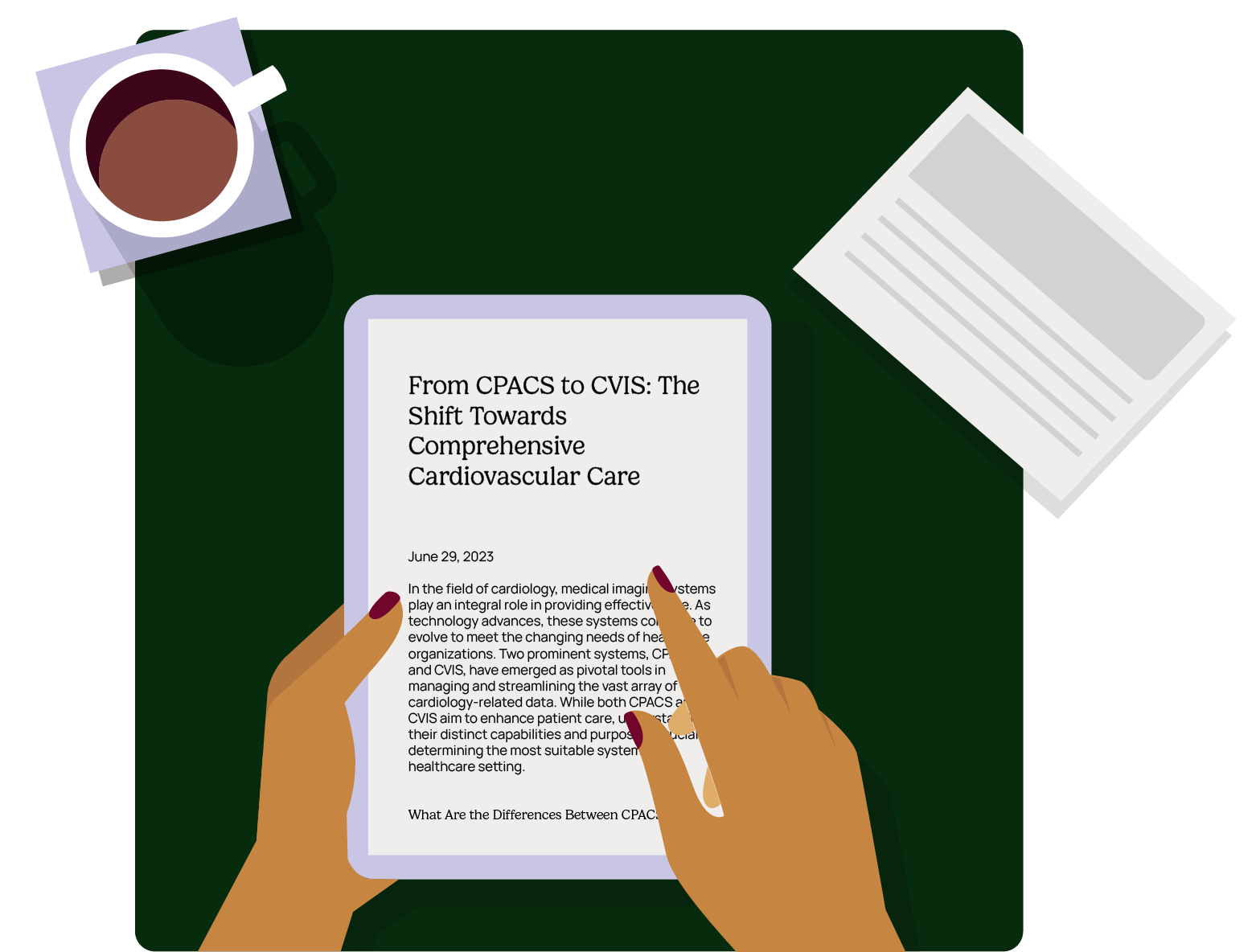June 29, 2023
In the field of cardiology, medical imaging systems play an integral role in providing effective care. As technology advances, these systems continue to evolve to meet the changing needs of healthcare organizations. Two prominent systems, CPACS and CVIS, have emerged as pivotal tools in managing and streamlining the vast array of cardiology-related data. While both CPACS and CVIS aim to enhance patient care, understanding their distinct capabilities and purpose is crucial in determining the most suitable system for a healthcare setting.
What Are the Differences Between CPACS and CVIS?
CPACS and CVIS, both healthcare information systems, are used to store, manage, archive, and communicate medical images. However, there are some key differences between the two systems.
CPACS stands for Cardiovascular Picture Archiving and Communication Systems. These are specifically designed for the cardiology department. A system like CPACS will manage, store, and allow for easy retrieval of cardiology images and diagnostic reports, including those derived from cardiac catheterization. These systems are usually integrated with modalities like Echocardiography, Nuclear Cardiology, Vascular Ultrasound, ECG (Electrocardiography), Hemodynamic systems, etc. The main goal of a CPACS is to digitize all cardiology-related images and documents, providing a unified, digital cardiology department.
CVIS stands for Cardiovascular Information Systems. A CVIS is a more comprehensive solution. It is a system that not only manages cardiology images (like a CPACS) but also manages other types of clinical information relevant to cardiovascular care. This includes everything from patient demographics, medical history, lab results, medication records, and more. The aim is to centralize all patient cardiovascular data into a single, accessible location, thereby improving workflow, patient care, and outcomes. It can interact with different departments, and the data can be used in clinical, operational, and financial decision-making.
The primary difference is in the scope and purpose of these systems. While both are utilized in cardiology, a CPACS focuses more specifically on the management and storage of images, while a CVIS provides a more comprehensive approach, integrating and managing all patient data related to cardiovascular care.
CPACS vs. CVIS: Weighing Cost, Capabilities, and Scalability in Medical Imaging Systems
In general, CPACS systems are less expensive than CVIS systems. However, CVIS systems offer a wider range of features and are more scalable.
The choice of whether to use a CPACS or a CVIS system depends on the specific needs of the healthcare organization. If the organization only needs to store and manage cardiology images, then a CPACS system may be a good option. However, if the organization needs to store and manage all types of medical images, then a CVIS system may be a better option.
Here is a table that summarizes the key differences between CPACS and CVIS systems:
| Feature |
CPACS |
CVIS |
| Purpose |
Store and manage cardiology images |
Store and manage all types of medical images, including cardiology images |
| Features |
Echocardiogram measurements |
Patient demographics, clinical notes, and other medical data |
| Cost |
Less expensive |
More expensive |
| Scalability |
Less scalable |
More scalable |
Moving From CPACS to CVIS
Initially, CPACS, similar to PACS in radiology, offered economical storage and convenient access to images in the era of less specialized cardiology diagnostics. However, over the past decade, the advent of electronic health records, hospital mergers, technological and regulatory changes have transformed cardiology, necessitating more advanced tools.
Sophisticated imaging techniques and advanced treatments like minimally-invasive mitral valve repair and transcatheter aortic valve replacement (TAVR) have emerged, increasing the demand for better data management. As cardiology departments became integrated into wider healthcare networks, the need for improved workflows and information exchange increased.
Consequently, CVIS, which offers the capability to collect, organize, measure, and report cardiology data at both individual and enterprise levels, has replaced CPACS. Today’s CVIS can handle diverse imaging files, clinical notes, lab reports, facilitate measurements, create clinical reports, and enable collecting and evaluating department-wide data. Interoperability with essential systems like EHR and cardio subspecialties has become feasible with CVIS. The upcoming application of artificial intelligence signals future advancements in this field.
In Summary
The evolution of healthcare technology continues to transform the cardiology landscape, as demonstrated in the transition from CPACS to CVIS. While CPACS has proved instrumental in managing and storing cardiology-specific images, the emergence of CVIS signifies the need for a more comprehensive solution that encompasses all patient data relevant to cardiovascular care. With the capacity to interact with various departments and contribute to clinical, operational, and financial decision-making, CVIS stands as a testament to the future of integrated, patient-centered care. However, the choice between CPACS and CVIS ultimately hinges on the specific needs and capabilities of the healthcare organization, indicating the importance of continued advancements and customization in healthcare technologies.
Ready to enhance your cardiology department with a comprehensive solution like Intelerad’s Cardiovascular System Solutions? Don’t wait any longer. Request a demo, see the extensive capabilities of CVIS, and understand how this robust system can revolutionize patient care in your organization.





